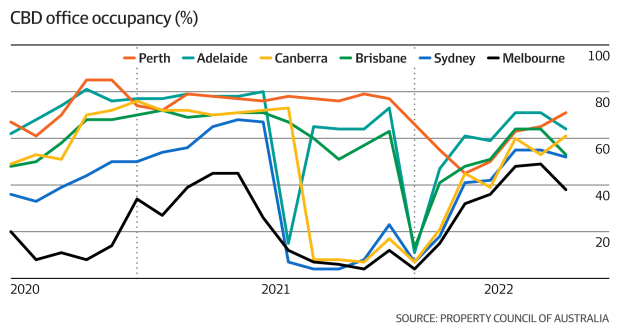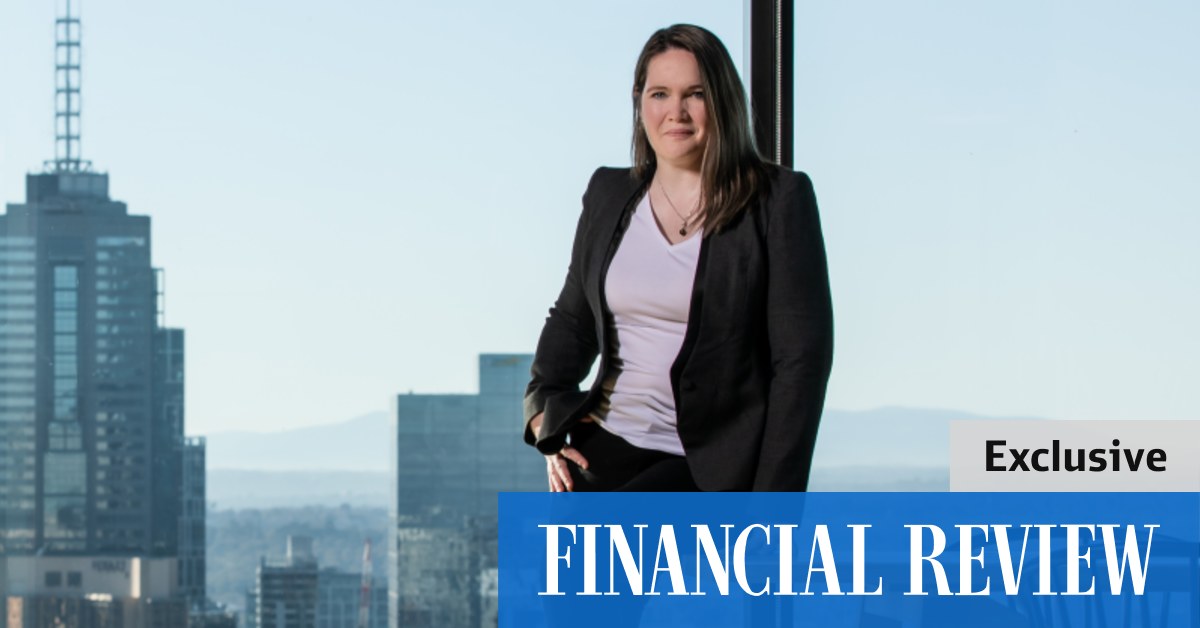ABB country human resources manager Beverly Stacey said despite the surge in cases last month, staff were keen to get back to the office on their nominated days.
“Within those teams, about 90 per cent of them would come in, there were only a few who were a bit nervous being in the same space with all the germs around,” she said.

“Seriously, they’re a very social bunch, and they just wanted to be together.”
Employers in some cities were urged to reconsider work-from-home arrangements amid last month’s surge in COVID-19 cases.
ABB ordinarily requires employees to attend the office twice a week for in-person team meetings, but day-to-day decisions around office attendance are usually up to staff members.
“It’s a bit hectic keeping up with government guidelines,” said Ms Stacey, who works in Melbourne.
“I feel sorry for our safety people – it’s a full-time job in itself, but we’ve reached a point though where it’s in the hands of our employees. We do everything safely and if somebody doesn’t feel safe coming to work or if they’re unwell, they don’t.
“We’re all in this together.”
Lucy Carruthers from ARM Architecture said staff stayed away from the office as COVID-19 cases rose, but generally not for long periods.
“The gravitational pull back into the office has been quite strong,” she said.
“My observation is that the occasions in which people get most nervous about being in the office is when they have an event that depends on staying well, such as upcoming travel, or a major personal event such as getting married. In that instance, we find that people will stay away or are just more diligent about wearing masks.
“Our profession really benefits from working together in the same place – whether that’s being on-site, physical drawing or model building, reviewing samples and meeting together.”
hybrid expectations
Danny Lessem, chief executive of human resources software company ELMO, said employees increasingly wanted hybrid work conditions.
“It would be too reductionist to say ‘well it’s just an upsurge in COVID, people are staying away’, employers have to recognize that there’s a new expectation from office workers to have further flexibility,” he said.
“This move to hybrid is just not a COVID thing, it’s becoming a standard expectation.”
Mr Morrison said low office occupancy rates should be considered an important factor for authorities in their pandemic management strategies.
“The good news is the mandates of 2020 and 2021 are well behind us and I think governments are unlikely to go back to directing people to work from home,” he said.
“I think what’s important for governments is to recognize that when they’re considering how best to manage these pandemic surges that they recognize that work from home is not a zero cost exercise.
“There is a cost – it’s not the office landlords, and it’s not the office tenants, it’s the retailers, and cafe owners and restaurants and their employees who are reliant on the office workers for their customers.”
Mr Morrison was hopeful the office recovery could resume amid indications the winter omicron wave had peaked and with spring approaching.
“Better weather is not only good for the pandemic, but generally puts a spring in people’s step as well and is likely to mean that people will be looking to come back to the office in greater numbers,” he said.
“I would hope from August and September onwards, we get back on the momentum train, and we start seeing occupancy build again across our key capitals.”
Despite the effects of the pandemic and a drop in occupancy, the Property Council’s latest office market report reveals businesses have leased more space across the country’s CBDs over the past six months, with demand increasing by 0.5 per cent.
Communications Collective founder Genevieve Brannigan said the agency was seeing a strong desire from predominantly Gen Y and Gen Z teams to work from the office.
“They have a thirst for connection and seem unknown by the current wave of COVID,” she said.
